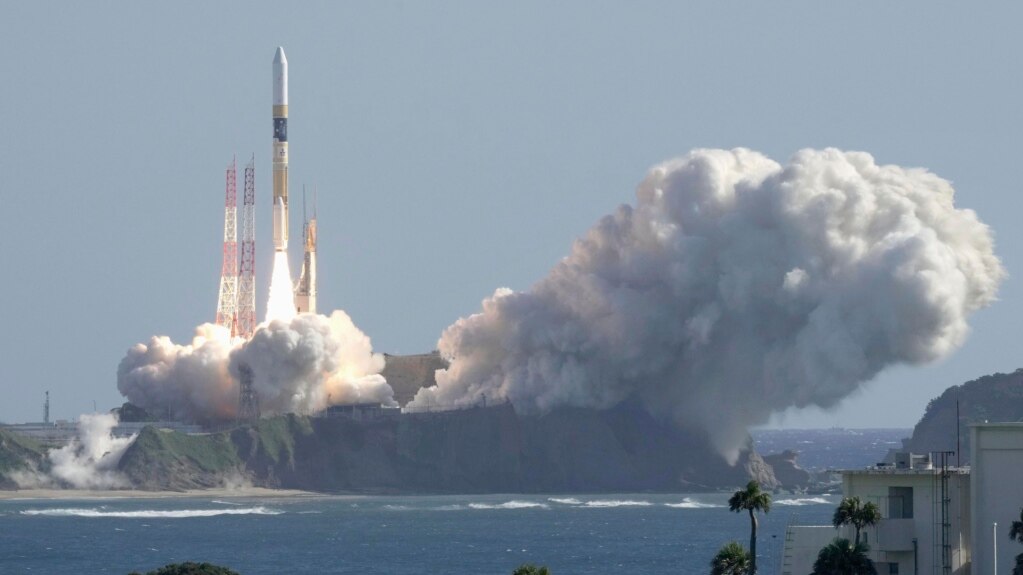Last week, Japan’s space agency launched a rocket carrying a spacecraft designed to explore the moon.
The lunar lander is known as the Smart Lander for Investigating the Moon (SLIM). It aims to touch down on the moon’s surface early next year. If successful, it would make Japan the fifth nation to land a spacecraft on the moon.
So far, only the United States, Russia, China and India have successfully landed spacecraft on the moon. India’s landing happened last month. India’s landing came days after Russia failed in its attempt to return to the moon for the first time in nearly 50 years.
In April, a private Japanese space exploration company announced its space vehicle crashed while trying to land on the moon. If that landing had been successful, it would have marked the first time a private business landed on the moon.
In the latest launch, an H-IIA rocket lifted off on September 7 from Tanegashima Space Center in southwestern Japan, the country’s JAXA space agency said. Hours after the launch, JAXA said it was receiving signals from the SLIM spacecraft, suggesting it was operating normally. It is expected to start the lunar landing process by February, the Reuters news agency reported.
Japanese space officials have said SLIM aims to land within 100 meters of its target area on the moon’s surface. The purpose, or mission, of the lander is to test the possibility that spacecraft can land on very specific targets.
JAXA President Hiroshi Yamakawa told a news conference the mission aims to prove that in the future, spacecraft will be able to land “where we want,” rather than only landing “where we can.”
SLIM is set to touch down in an area called Mare Nectaris, on the southeastern half of the moon. The area contains plains of solidified lava and appears as a dark area from Earth.
After landing, SLIM will seek to examine the mineral-rich rocks to search for clues about the moon’s development. The spacecraft is not carrying a lunar explorer.
SLIM is a small lander. It weighs a little more than 700 kilograms. JAXA plans to use additional light spacecraft in the future to reduce launch costs and permit more missions.
The spacecraft uses a chemical propulsion system and is equipped with very small electronic devices to control the lander. SLIM's overall development cost about $102 million.
The rocket that launched SLIM also carried the X-Ray Imaging and Spectroscopy Mission (XRISM) satellite. This part of the mission is a joint project of JAXA, the American space agency NASA and the European Space Agency.
The lander successfully separated from the rocket about 45 minutes after the launch. Ground stations in Hawaii and Japan received signals from XRISM soon after the launch. This confirmed the satellite's solar equipment had successfully deployed, JAXA said.
The XRISM satellite is designed to take images in many wavelengths of X-rays and to study the chemicals that exist in matter at high temperatures. It can gather information on the speed and makeup of what lies between galaxies. This can help scientists better understand how stars and galaxies developed. The satellite is equipped to look at X-rays of different wavelengths, or spectra, even ones at very high energy levels.
JAXA is also planning a joint lunar mission with the Indian Space Research Organization sometime after 2025. This will involve Japan's H3 rocket carrying India's next lunar lander into space.
And Japan also aims to send an astronaut to the moon's surface in the latter half of the 2020s as part of NASA's Artemis program.
I’m Bryan Lynn.

